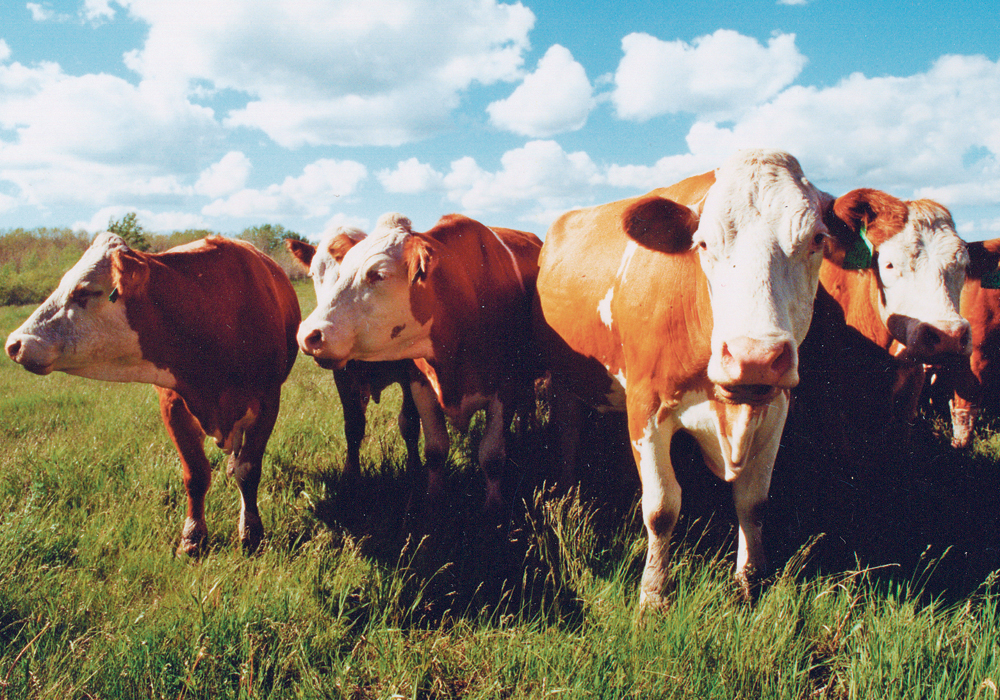YVERDON-LES-BAINS, Switzerland/CHICAGO (Reuters) — In a field of sugar beets in Switzerland, a solar-powered robot that looks like a table on wheels scans the rows of crops with its camera, identifies weeds and zaps them with jets of blue liquid from its mechanical tentacles.
Undergoing final tests before the liquid is replaced with herbicide, the Swiss robot is one of new breed of artificial intelligence weeders that investors say could disrupt the $100 billion pesticides and seeds industry by reducing the need for universal herbicides and the genetically modified crops that tolerate them.
Read Also

Farming Smarter receives financial boost from Alberta government for potato research
Farming Smarter near Lethbridge got a boost to its research equipment, thanks to the Alberta government’s increase in funding for research associations.
Dominated by companies such as Bayer, DowDuPont, BASF and Syngenta, the industry is bracing for the impact of digital agricultural technology, and some firms are already adapting their business models.
The stakes are high. Herbicide sales are worth $26 billion a year and account for 46 percent of pesticide revenue overall, while 90 percent of GM seeds have some herbicide tolerance built in, according to market researcher Phillips McDougall.
“Some of the profit pools that are now in the hands of the big agrochemical companies will shift, partly to the farmer and partly to the equipment manufacturers,” said Cedric Lecamp, who runs the $1 billion Pictet-Nutrition fund that invests in companies along the food supply chain.
In response, companies such as Bayer have sought partners for their own precision spraying systems, while ChemChina’s Syngenta is looking to develop crop protection products suited to the new equipment.
While still in its infancy, the plant-by-plant approach heralds a marked shift from standard methods of crop production.
Now, non-selective herbicides such as Monsanto’s Roundup are sprayed on vast tracts of land planted with tolerant GM seeds, driving one of the most lucrative business models in the industry.
But ecoRobotix, developer of the Swiss weeder, believes its design could reduce the amount of herbicide farmers use by 20 times. The company said it is close to signing a financing round with investors and is due to go on the market by early 2019.
Blue River, a Silicon Valley startup bought by U.S. tractor company Deere & Co. for $305 million last year, has also developed a machine using on-board cameras to distinguish weeds from crops and apply herbicides only where necessary.
Its See and Spray weed control machine, which has been tested in U.S. cotton fields, is towed by a tractor, and the developers estimate it could cut herbicide use by 90 percent once crops have started growing.
German engineering company Robert Bosch is also working on similar precision spraying kits, as are other startups such as Denmark’s Agrointelli
ROBO Global, an advisory firm that runs a robotics and automation investment index tracked by funds worth a combined $4 billion, believes plant-by-plant precision spraying will only gain in importance.
“A lot of the technology is already available. It’s just a question of packaging it together at the right cost for the farmers,” said Richard Lightbound, Robo’s chief executive officer for Europe, the Middle East and Africa.
“If you can reduce herbicides by the factor of 10, it becomes very compelling for the farmer in terms of productivity. It’s also eco friendly, and that’s clearly going to be very popular, if not compulsory, at some stage,” he said.
While Blue River, based in Sunnyvale, California, is testing a product in cotton fields, it plans to branch into other major crops such as soybeans. It expects to make the product widely available to farmers in about four to five years, helped by Deere’s vast network of equipment dealers.
Robo’s Lightbound and Pictet’s Lecamp said they were excited by the project, and Jeneiv Shah, deputy manager of the $212 million Sarasin Food & Agriculture Opportunities fund, said the technology would put Bayer and Syngenta’s crop businesses at risk while seed firms could be hit, albeit to a lesser extent.
“The fact that a tractor and row-crop oriented company such as John Deere did this means it won’t be long before corn or soybean farmers in the U.S. Midwest will start using precision spraying,” Shah said.
While the technology promises to save money, it could be a tough sell to some U.S. farmers because five years of bumper harvests have depressed prices for staples including corn and soybeans. U.S. farm incomes have dropped by more than half since 2013, reducing spending on equipment, seeds and fertilizer.
Still, the developments are giving investors in agrochemical stocks pause for thought, according to Berenberg analyst Nick Anderson. And agrochemical giants are taking note.
Bayer, which will become the world’s biggest seed and pesticide producer when its acquisition of GM crop pioneer Monsanto completes, teamed up with Bosch in September for a “smart spraying” research project.
The German partners plan to outpace rivals by using an on-board arsenal of up to six herbicides, and Bayer hopes the venture will prepare it for a new commercial model, rather than cannibalizing its current business.
“I would assume that within three years we would have a robust commercially feasible model,” Liam Condon, head of Bayer’s crop science division, said in February.
“I’m not concerned in terms of damping sales because we don’t define ourselves as a volume seller. We rather offer a prescription for a weed-free field, and we get paid based on the quality of the outcome,” he said.
Bayer agreed to sell its digital farming ventures, including the Bosch project, to l BASF as part of efforts to win antitrust approval to buy Monsanto. However, BASF will grant Bayer an unspecified license to the digital assets and products.
BASF said the Bosch precision spraying collaboration was very interesting, but it was too early to comment further because the transaction had not completed.
Syngenta, which was an investor in Blue River before Deere took over, said the advantages of the new technology outweighed any potential threats to its business model.
“We will be part of the story by making formulations and new molecules that are developed specifically for this technology,” said Renaud Deval, global head of weed control at Syngenta, which was bought by ChemChina last year.
While it has no plans to invest directly in engineering, Syngenta is looking into partnerships where it can contribute products and services, Deval said.
Still, Sarasin’s Shah said the big agrochemical firms would need to accelerate spending on getting their businesses ready for new digital agricultural technology.
“The established players need to invest a lot more than they currently are to be positioned better in 10 years’ time. The sense of urgency will increase as farmers start to adopt some of the more advanced kits that are coming out,” he said.
Michael Underhill, chief investment officer at Capital Innovations, also said the major players may be underestimating the potential impact on their pesticides businesses.
“Precision leads to efficiency, efficiency leads to decreased usage, decreased usage leads to decreased margins or margin compression, and that will lead to companies getting leaner and meaner,” said Underhill.
He said the GM seeds market would also take a hit if machine learning takes over the role that genetic modification has played in shielding crops from herbicides’ friendly fire.
“Instead of buying the Cadillac of seeds or the Tesla of seeds, they may be buying the Chevy version,” Underhill said.
The advent of precision weed killing also comes at a time when blanket spraying of global blockbusters such as glyphosate is under fire from environmentalists and regulators alike.
More than 20 years of near-ubiquitous use of glyphosate, the active ingredient in Roundup, has created resistant strains of weeds that are spreading across the U.S. farm belt.
Regulators have raised the bar for bringing blanket chemical agents to market, and the fear of toxic risks has been heightened by the debate over the potential impact of glyphosate on health.
Michael Owen, associate chair at Iowa State University’s Department of Agronomy, reckons it would now cost agrochemical giants up to an almost prohibitive $400 million to develop a next-generation universal herbicide.
Bayer’s Condon said in the current environment precision spraying could well be the final blow to further attempts to develop new broad-spectrum or non-selective herbicides.
“Everything that comes tends to be selective in nature. There won’t be a new glyphosate. That was probably a once-in-a-lifetime product,” said Condon.
For now, the industry is reviving and reformulating older, broad-spectrum agents— dicamba and 2,4-D — to finish off glyphosate-resistant weeds, and it is selling new GM crops tolerant to those herbicides.
Precision spraying could mean that established herbicides whose effect has worn off on some weeds could be used successfully in more potent, targeted doses, said Claude Juriens, head of business development at ecoRobotics in Yverdon-les Bains.
However, experts say new products will still be needed for the new technology, and some chemical firms are considering reviving experimental herbicides once deemed too costly or complex.
“Because we’re now giving the grower an order of magnitude reduction in the amount of herbicide they’re using, all of a sudden these more expensive, exotic herbicides are now in play again,” said Willy Pell, Blue River director of new technology.
“They’ve actually devoted resources to looking through their backlog, kind of cutting room floor, and rethinking these different materials with our machine in mind,” he said.

















